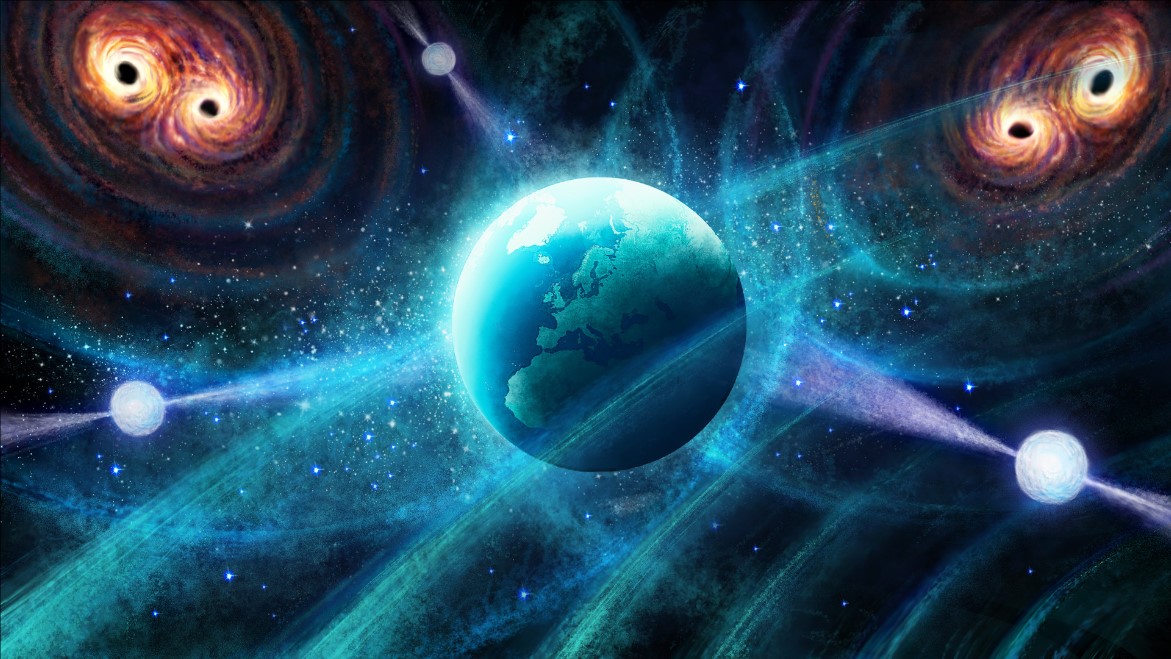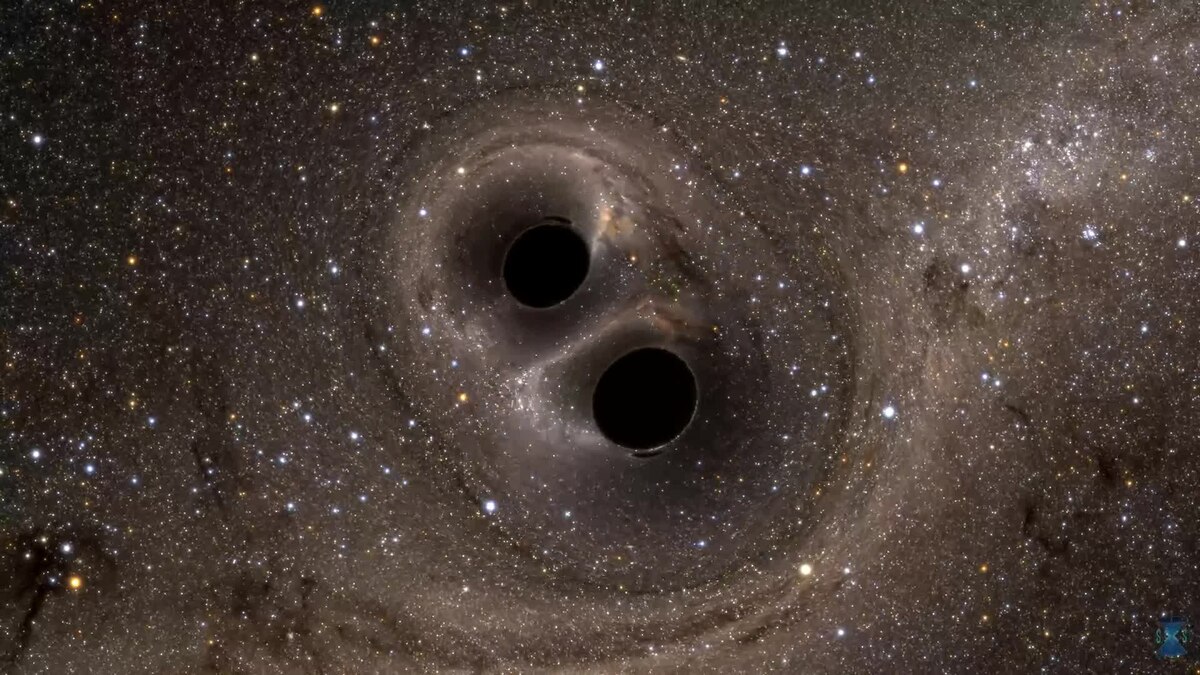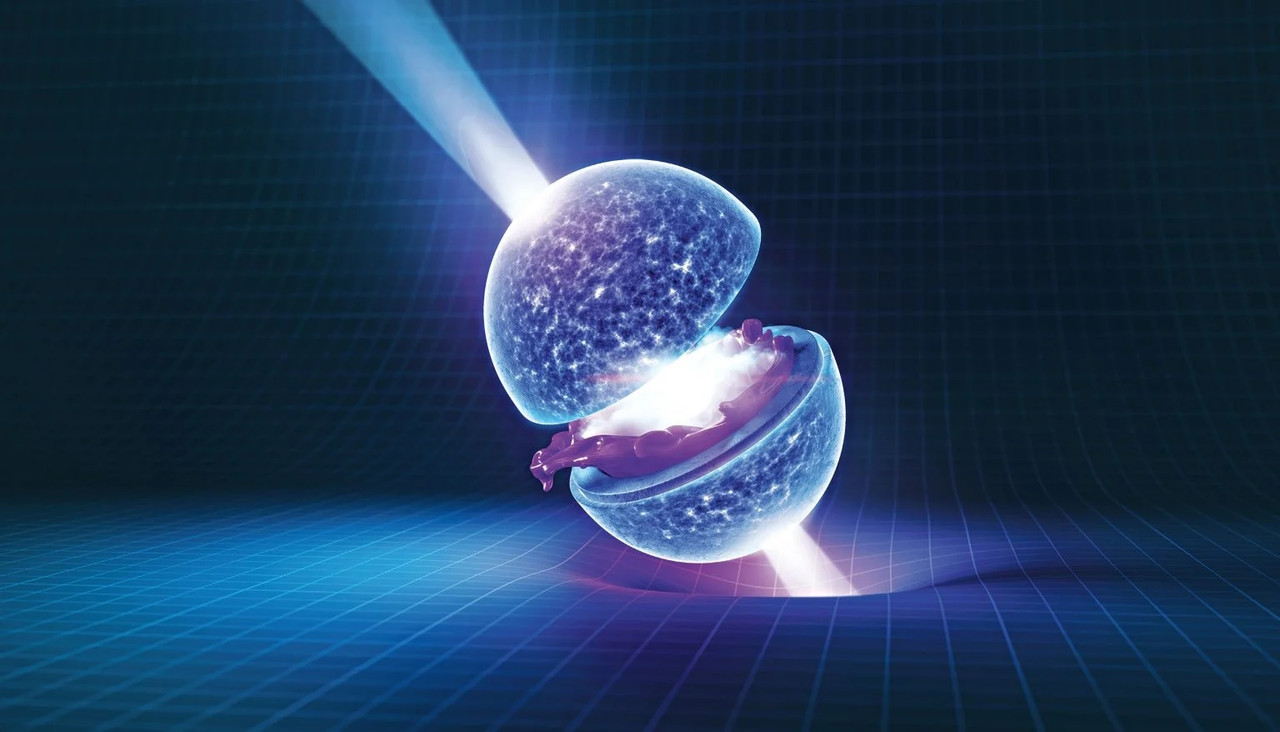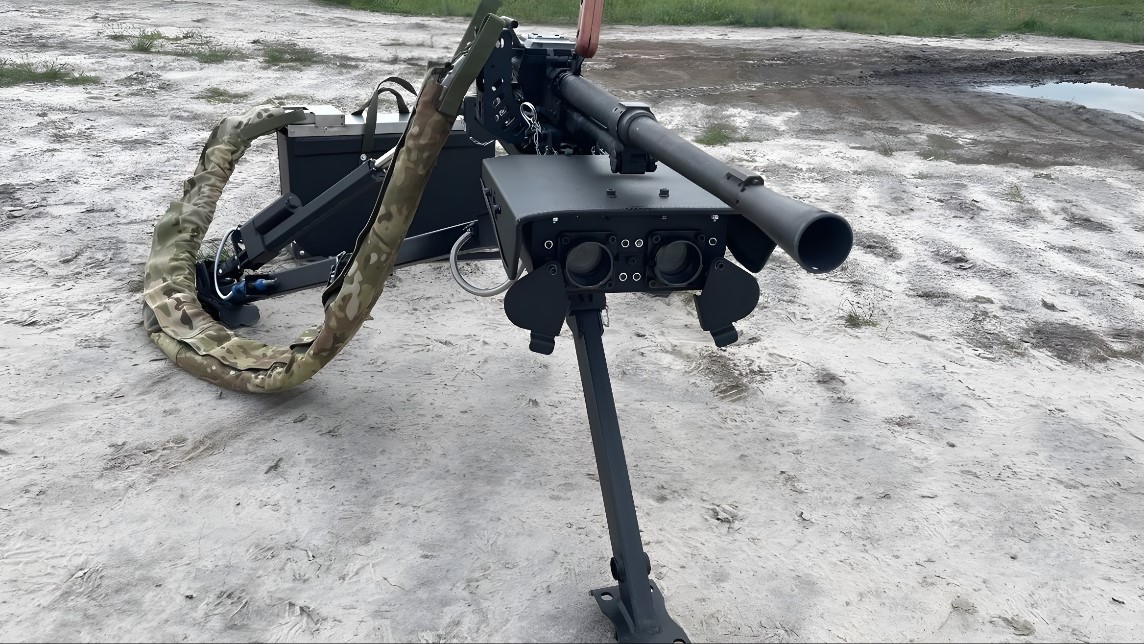Unveiling the Cosmos: The Era of Gravitational Wave Detection

In the quest to unravel the mysteries of
the universe, scientists have long sought elusive signals that could offer
unprecedented insights into the fabric of spacetime itself. Among the most
profound discoveries in modern astrophysics is the detection of gravitational
waves, ripples in the curvature of spacetime, predicted by Albert Einstein's
general theory of relativity a century ago. The direct observation of these
cosmic phenomena not only confirms Einstein's theory but also opens a new
window to explore the universe's most violent and enigmatic events. In this
article, we embark on a journey through the exhilarating realm of gravitational
wave detection, tracing its historical origins, ground-breaking discoveries,
technological innovations, and the profound implications for our understanding
of the cosmos.
Historical
Origins
The concept of gravitational waves traces
back to 1916 when Albert Einstein proposed his ground-breaking theory of
general relativity. According to this theory, massive objects such as black
holes and neutron stars distort the fabric of space time, generating
gravitational waves as they accelerate through space. However, it wasn't until
the late 20th century that scientists began seriously contemplating the
possibility of detecting these elusive waves.
In the 1960s and 1970s, pioneering
researchers, including Joseph Weber and Ray Weiss, laid the groundwork for
gravitational wave detection. Weber developed the first resonant bar detectors,
massive aluminium cylinders designed to resonate in response to passing
gravitational waves. Although Weber claimed to have detected gravitational wave
signals, subsequent experiments failed to replicate his results.
The quest for gravitational wave detection
gained momentum in the 1980s with the proposal of laser interferometry
techniques by Weiss and his colleagues. The Laser Interferometer
Gravitational-Wave Observatory (LIGO) project, initiated in the 1990s, marked a
significant milestone in this endeavour, culminating in the historic detection
of gravitational waves in 2015.
Technological Innovations
Gravitational wave detection represents a
triumph of technological innovation, requiring exquisite precision and
sensitivity to detect minute disturbances in spacetime. Key technological
advancements include:
Laser
Interferometry: At the heart of gravitational wave
detectors lies laser interferometry, a technique that measures the minute
changes in the distance between mirrors induced by passing gravitational waves.
LIGO and its counterparts, including Virgo in Europe and KAGRA in Japan, employ
laser interferometers with arms several kilometers in length to detect
gravitational wave signals.
High-Precision
Optics: Gravitational wave detectors rely on
high-precision optics to minimize noise and maximize sensitivity. Advanced
mirror coatings, seismic isolation systems, and vibration damping mechanisms
are employed to mitigate environmental disturbances and enhance the detectors'
sensitivity to gravitational wave signals.
Data
Analysis Algorithms: Analyzing the vast amounts of
data generated by gravitational wave detectors requires sophisticated data
analysis algorithms. Signal processing techniques, machine learning algorithms,
and Bayesian inference methods are employed to distinguish genuine gravitational
wave signals from background noise and astrophysical artifacts.
International Collaboration: Gravitational wave detection is a global endeavor, involving collaboration among scientists and institutions worldwide. International collaborations, such as the LIGO Scientific Collaboration (LSC) and the Virgo Collaboration, pool resources, expertise, and data to maximize the chances of detecting gravitational wave signals and interpreting their astrophysical origins.

Binary Black Hole
Groundbreaking Discoveries
Since the first detection of gravitational
waves in 2015, scientists have made several groundbreaking discoveries,
unveiling the universe's most cataclysmic events:
Binary
Black Hole Mergers: The first gravitational wave
detection, GW150914, confirmed the existence of binary black hole systems
predicted by theory. Subsequent detections of binary black hole mergers,
including GW151226 and GW170104, provided unprecedented insights into the dynamics
and astrophysical properties of these cosmic phenomena.
Binary
Neutron Star Merger: In 2017, LIGO and Virgo made
history by detecting gravitational waves from the merger of two neutron stars,
known as GW170817. This event, accompanied by a gamma-ray burst and
electromagnetic radiation across the electromagnetic spectrum, heralded a new
era of multi-messenger astronomy, allowing scientists to probe the nature of
neutron stars and the origin of heavy elements.
Black
Hole-Neutron Star Collisions: Gravitational wave
detections of black hole-neutron star mergers, such as GW190425, have provided
insights into the population statistics of compact binary systems and the
formation channels of black holes and neutron stars.
Cosmological
Implications: Gravitational wave observations have
profound implications for cosmology, offering new constraints on the expansion
rate of the universe, the nature of dark energy, and the cosmic microwave
background.

Insides of neutron stars
Astrophysical
Implications
Gravitational wave detections have
revolutionized our understanding of astrophysical phenomena, shedding light on
the universe's most violent and energetic events:
Black
Hole Astrophysics: Gravitational wave detections
have provided unprecedented insights into the astrophysical properties of black
holes, including their masses, spins, and merger rates. These observations have
validated theoretical predictions and refined models of black hole formation
and evolution.
Neutron
Star Physics: The detection of neutron star mergers
has illuminated the physics of neutron-rich matter, offering clues to the
equation of state of nuclear matter, the formation of neutron stars, and the
production of heavy elements through r-process nucleosynthesis.
Cosmic
Evolution: Gravitational wave observations of
binary systems at different cosmic epochs provide a unique probe of cosmic
evolution, offering insights into the formation and evolution of galaxies, the
growth of supermassive black holes, and the assembly history of cosmic
structures.
Cosmological
Tests: Gravitational wave detections serve as
cosmological probes, offering new tests of fundamental physics and cosmological
models. Measurements of the Hubble constant, the expansion rate of the
universe, and the nature of dark energy provide constraints on cosmological
parameters and the cosmic distance ladder.
Future Prospects
The future of gravitational wave detection
holds promise for further discoveries and insights into the cosmos:
Third-Generation
Detectors: The next generation of gravitational
wave detectors, such as the Laser Interferometer Space Antenna (LISA) and the
Einstein Telescope, will push the boundaries of sensitivity and frequency
coverage, enabling observations of lower frequency gravitational wave sources,
such as supermassive black hole binaries and cosmological signals.
Multi-Messenger
Astronomy: Gravitational wave observations will
continue to complement traditional astronomical observations across the
electromagnetic spectrum, ushering in a new era of multi-messenger astronomy.
Coordinated observations of gravitational wave events with telescopes and
observatories worldwide will provide comprehensive insights into the
astrophysical processes underlying these cataclysmic events.
Astrophysical
Catalogs: Large-scale surveys and catalogs of
gravitational wave events will enable statistical studies of the population
properties of compact binary systems, black hole mergers, and neutron star
binaries, shedding light on their formation mechanisms, evolutionary pathways,
and cosmic demographics.
Cosmological
Probes: Gravitational wave observations will serve
as powerful probes of cosmology, offering new tests of general relativity,
alternative theories of gravity, and the nature of dark matter and dark energy.
Measurements of cosmological parameters and the cosmic distance ladder will
refine our understanding of the universe's origin, evolution, and fate.
Editor’s
Thoughts:
The detection of gravitational waves
heralds a new era in astrophysics, offering a novel window to explore the
universe's most violent and enigmatic phenomena. Through a convergence of
theoretical predictions, technological innovations, and international
collaborations, scientists have unlocked the secrets of the cosmos hidden
within the ripples of spacetime itself. From the cataclysmic collisions of
black holes and neutron stars to the cosmic symphony of the expanding universe,
gravitational wave detections have transformed our understanding of the cosmos
and our place within it, paving the way for future discoveries and insights
into the mysteries of the universe.


